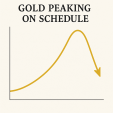Best Of the Year: Top 5 Frank Talk Posts Of 2017

As we begin a New Year, I want to share with you the five most popular Frank Talk posts of 2017. One common theme you’ll see in these posts is they all center on the topic of gold. Although we specialize in educating investors about gold and managing gold funds, it’s worth noting that our gold posts garnered more interest than our bitcoin and blockchain posts in this year of cryptocurrency craze.
Cryptocurrencies hogged the spotlight in 2017, and some might say this attention drove investors away from traditional assets such as gold; however, I disagree, as I believe gold and bitcoin serve different purposes. While many might think gold underperformed in 2017, it actually finished the year strong. The precious metal ended the year up approximately 13 percent.
2017 In Review: The Top 5 Posts
1. 5 Things You Need to Know from last Week (Look What Gold Just Did!)
The last week of May was particularly bullish for gold after a “golden cross”—the 50-day moving average climbing above the 200-day moving average—occurred for the first time in over a year. A report released that same week from the Wall Street Journal confirmed my suspicion that Wall Street is run by quantitative analysts, or quants, whereby traders and fund managers make their instincts based on oceans of data rather than gut instinct. Other highlights from the week included the U.S. bouncing back as the top wheat producer and bitcoin trading around $2,700, double that of an ounce of gold. (By the end of this year, bitcoin, of course, hit a peak of over $19,000 then lost 30 percent of its value shortly thereafter.)
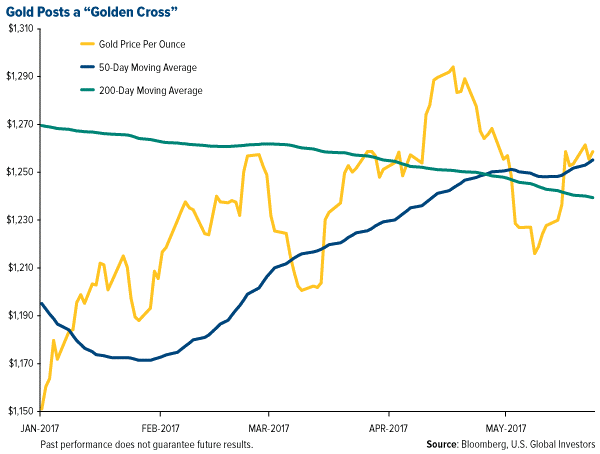
2. “Mother of All Bubbles” Keeps Gold in Focus
While many write of the potential bubble of bitcoin, I wrote earlier this year of the “mother of all bubbles”: total global debt. Global debt levels are rising each year with the U.S. alone adding $3 trillion every year to the pension deficit. People are living longer while near-zero interest rates are encouraging heavy levels of borrowing. In preparation for a possible burst, investors might consider placing some of their wealth in a hard asset such as gold.
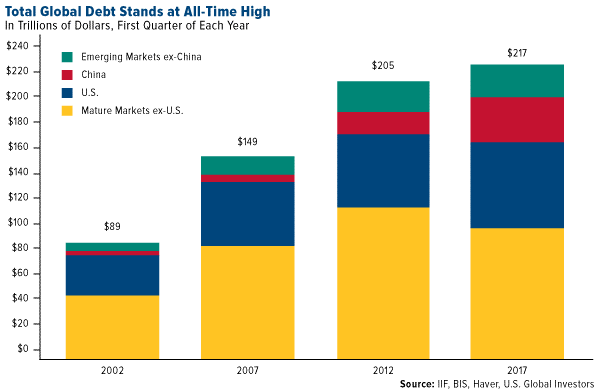
3. Gold Gets a Shot in the Arm from Inflation and China
In January we saw a rate hike of 0.25 percent and the gold market responded favorably after the Federal Reserve took a dovish tone regarding future rate hikes. Gold has historically been an attractive hedge against inflation. The bull market, currently in its eighth year, is facing some significant geopolitical and macroeconomic uncertainty, and we could be getting late in the economic cycle. For the 10-year period, the yellow metal has shown an inverse correlation to risk assets such as stocks and high-yield bonds.
With China and India set to become the two largest economies by 2050 and already the top two gold consuming nations, we expect to see demand rise greatly for gold. Historically, when incomes rise in China and India, demand also rises for the yellow metal.
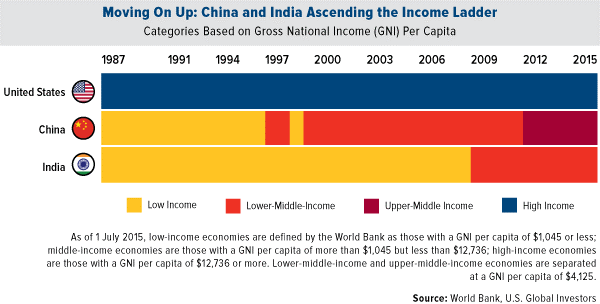
4. Gold Was Chemically Destined to Be Money All Along
Mid-year I brushed up on my knowledge of gold’s chemical properties. Gold is unlike any other metal, and the fact that it’s so chemically “boring” is one of the many reasons why it’s so highly valued, even today. The precious yellow metal beats out all other metals and leaves silver in second place to be the best possible candidate for a currency of any value.
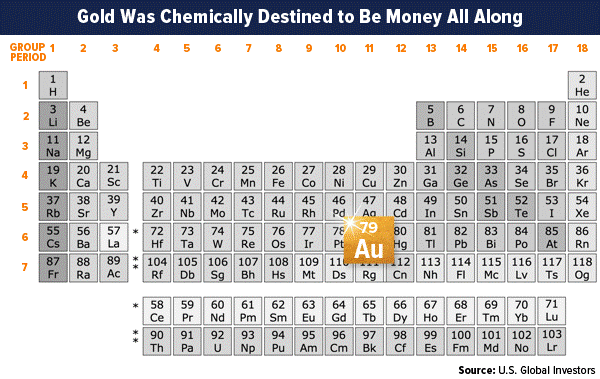
In a time of rising global debt and currencies free-floating, I believe gold will remain a strong asset class for storing wealth and hedging against inflation. Early last year, former Fed Chairman Alan Greenspan told the World Gold Council he views gold as the primary global currency. At U.S. Global Investors, we continue our long-standing recommendation to give the metal a 10 percent weighting—5 percent in physical gold and the other 5 percent in high-quality gold stocks, mutual funds and ETFs.
5. The World is Running out of Gold Mines—here’s How Investors Can Play It
In response to lower gold prices, explorers have had to slash their exploration budgets resulting in fewer large mines being discovered. 2016 marked the fourth consecutive year of falling exploration budgets and an 11-year low.
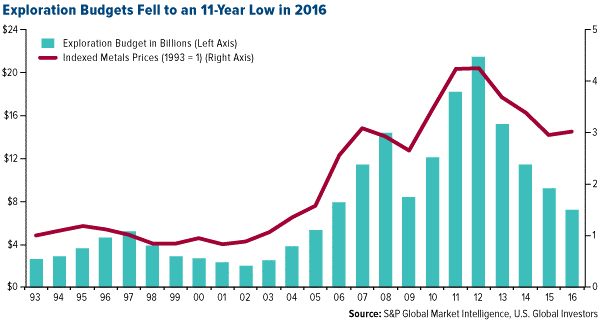
Since all the “low hanging fruit” gold mines have likely already been discovered, explorers now have to dig deeper and venture farther into more extreme environments to find economically viable deposits. This increases the cost of exploration and ultimately production. As costs are rising, many senior gold producers are instead acquiring smaller firms with proven, profitable projects rather than exploring themselves. Investors can use this to their advantage by investing in junior gold companies that look like targets for takeover.
2017 is the eighth year of the S&P 500 Index bull-run, closing at multiple all-time highs this year alone! Test your knowledge of the index’s history or check out other interactive favorites from our Investor Library.
*********
To all of our readers around the world, I wish you robust health, buckets of wealth and tons of happiness in the New Year!
All opinions expressed and data provided are subject to change without notice. Some of these opinions may not be appropriate to every investor.
The Standard & Poor's 500, often abbreviated as the S&P 500, or just the S&P, is an American stock market index based on the market capitalizations of 500 large companies having common stock listed on the NYSE or NASDAQ. The S&P 500 index components and their weightings are determined by S&P Dow Jones Indices.
Gold, precious metals, and precious minerals funds may be susceptible to adverse economic, political or regulatory developments due to concentrating in a single theme. The prices of gold, precious metals, and precious minerals are subject to substantial price fluctuations over short periods of time and may be affected by unpredicted international monetary and political policies. We suggest investing no more than 5% to 10% of your portfolio in these sectors.






 Frank Holmes is the CEO and Chief Investment Officer of
Frank Holmes is the CEO and Chief Investment Officer of 

